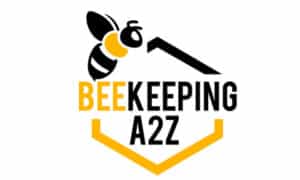Leaving an unharvested hive is not such a good idea. Bees may find their place too small to swarm, leaving the hive looking for a bigger home. Another possibility is for the bees not to leave the hive and to store the honey in the combs designated to raise bee broods. The colony will not be able to raise new bees if this happens, and the next generation will lose strength and number.
Bees can continue to collect honey and take up so much space in the hive that the queen has little to no place to lay eggs. It’s referred to as being bound by honey when this happens.
The basis of Harvesting Honey
Unless bees gather enough honey to fill the hive full, then one of two things can happen. First, the bees can decide their place is too small and then swarm and leave the colony in search of a bigger home.
The second thing that can happen is that the bees are not going to leave the hive but are going to start storing honey in the comb they would use to raise young bees. This is unfortunate as the colony cannot raise new bees, and the colony will become very weak and can fail as the current bees grow old and die.
Both of these situations are just as bad for the beekeeper. A hive packed with honey bees can be several hundred dollar investments. Harvesting excess honey is better than allowing your bees to pack up and leave or die out because they ran out of space.
Beekeeping Preservation
Some beekeepers pursue beekeeping where they do not harvest honey to keep healthy colonies of honeybees that are often allowed to swarm. They do so to contribute to the presence of honeybees’ wild swarms, which enhance the genetic diversity among bees.
Some keep bees for pollination. Honeybee colonies can be permitted to swarm whenever they want or handle it in a way that prevents constant swarming.
It builds up when the honey isn’t harvested from a beehive. A colony of honeybees with enough food stocks and large enough numbers will likely swarm. Some bees that equal about half or more of the colony go off with a new queen to begin a new colony of honeybees. The bees consume honey before leaving so that they can go long without feeding. The honey diet also helps with wax production when the swarm finds a home and must quickly draw a comb.
The honey bees are left in the beehive, where swarming has taken place to repopulate the colony. Swarming can happen again. The hive can see swarming occur more than twice in a period lasting between late spring and late autumn. Subsequent swarms from the same colony often have fewer bees than the main swarm. They can also leave the bees in the original colony with little supply of honey. Swarming isn’t a bad thing for beekeepers as it ensures genetic diversity in colonies of honeybees. It also allows beekeepers to bring their new beehives into new swarms.
Common questions about not harvesting honey
What Do Bees Eat When Their Honey is Taken Away?
Bees consume foods that vary per their age and type. The queen bee is fed a different diet than the larvae. Worker bees in the beehive eat food that differs from forager bees. Bees are fed with pollen and nectar. The nectar can be eaten as it is or turned into honey. Beehive pollen is made into a mass of cakes and is kept in the beehive. When there’s sufficient, bees consume different foods when they come in from the fields. When forager bees are unable to leave the hive, the honeybee colony is kept going by honey and stored pollen.
Harvest time is planned so as not to harm the bees. The beekeeper doesn’t remove all the honey from the beehive and leaves nothing to the bees. In the beehive are left a few frames which contain honey. For specific cells, the frames can be full of honey or just honey.
How to Know When to Harvest Honey?
At the end of sizable nectar flow and when the beehive is filled with cured and capped honey, beekeepers harvest their honey. Conditions and circumstances around the world differ significantly. First-year beekeepers are fortunate. If by late summer, a small honey harvest happens. It is because a new colony requires a full season to build up an adequately large population to produce a surplus of honey.
You are welcome to remove and harvest this frame when a shallow frame contains 80 percent or more of sealed, capped honey. You can practice perseverance, leave your frames in place and wait for one of these to be true: The bees have filled all the frames with capped honey, and the last major nectar flow of the season is complete.
Is Taking Honey from Bees Wrong?
Bees will adapt to the loss of honey resources. It is not incorrect to harvest honey and collect it from bees. Nevertheless, good beekeepers try to ensure that they leave enough honey in the beehive for the colony’s survival.
A single beehive can produce a lot of pounds of honey in a season, with proper beehive management. Before the winter or rainy season, the honey is collected continuously. Once the honey is fully cured, bees cover the cells that hold honey in a capping process using a light layer of beeswax. A healthy colony doesn’t feel the harvesting effect of honey from the beehive and continues to make more honey.
Conclusion
Considering that not removing the honey causes swarming and finding new hives, or they get to a moment where the queen can no longer lay enough in a day to thrive with the population. There are fewer broods to be raised, no nectar or pollen to bring in.

